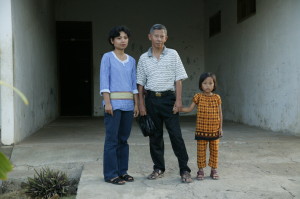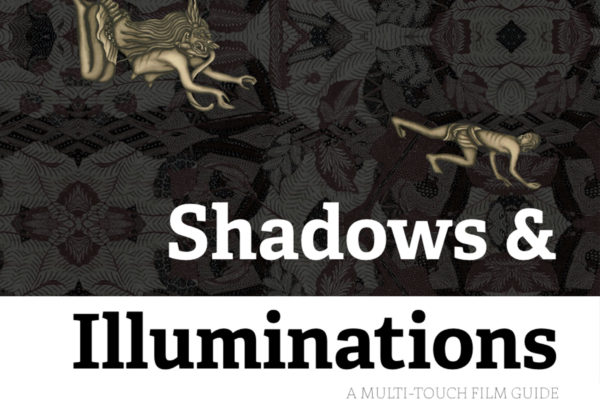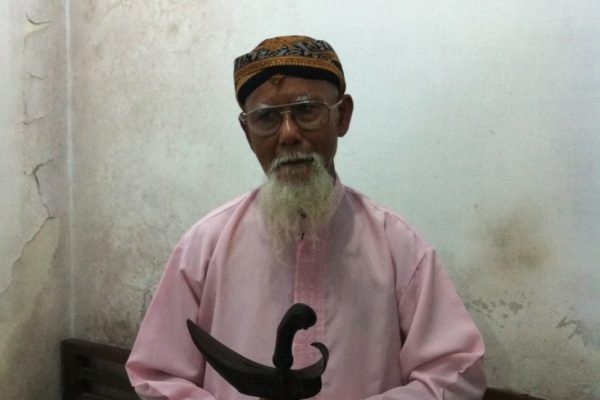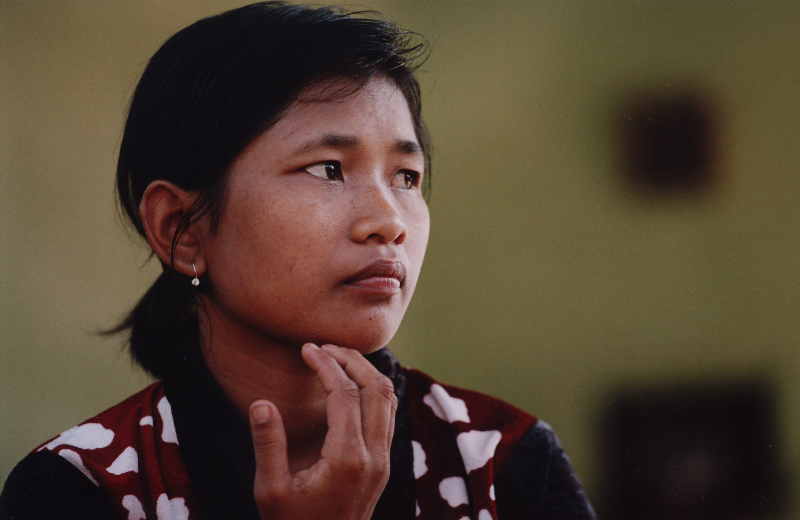It is not uncommon for anthropologists engaged in long-term, longitudinal, ethnographic research to have their foci and at times basic domain or research area shift over time.
This occurs also in long-term ethnographic film projects, which though far fewer in number, can be quite memorable as they can represent ideas and stories in a more immediate or visceral manner than the written word. The most obvious and striking example of this would be John Marshall’s magnum opus “A Kalahari Family.”
A Kalahari Family
This six-hour film starts in the early ’50s, when a teenaged Marshall traveled to South Africa with his family, and began what would become a 50-year project work with the Ju/’hoansi of what is now Namibia. Among the first people they met were Toma “Stumpy” Tsamko, whom at the time was living as a hunter-gatherer on bush foods. The Marshalls were Toma and his family’s first contact with the outside world. When Marshall and his family began the ethnographic and film work, they certainly could not foresee where it was heading. It is difficult to imagine that Marshall would know that he and Toma would develop a deep friendship, and these these two remarkable families would be forever tied together.
Marshall also could not have foreseen that, over the course of the next 50 years, this family and society would undergo massive changes, paralleling the all-too-familiar course of indigenous peoples throughout history. The year after Marshall was ejected from South Africa in 1958 for his political advocacy of the bushmen, the Ju/’hoansi were forcibly resettled in squalid shantytowns, and subject to the diseases of “civilisation” — tuberculous, venereal disease, and alcoholism. In the 1980s, the men were impressed into military service in the brutal South African war against the Southwest Africa Peoples Organization (SWAPO). Finally, in the 2000s, after gaining a measure of independence as small subsistence farmers, they suffered greatly at the hands of the International Aid community. The film describes the mission of one such group, which was to “preserve” (for the tourist trade) a “traditional” hunter gatherer lifestyle that the Ju/’hoansi did not want, and indeed could not, return to. This last 90-minute segment, “Death Through Myth,” follows this final story, and Marshall’s unflinching and honest portrayal of both his personal anguish at these developments, and Toma Tsamko’s family’s continued suffering and degradation, will remain long seared in a viewer’s consciousness.
I watched “A Kalahari Family” when in first was released in 2004, and was privileged to meet several times with John Marshall before his death in 2005. We discussed one of my film projects at the time, concerning a young woman named Gusti Ayu, which resulted in several movies, the early “Movements and Madness,” and the later “Bird Dancer.” Marshall encouraged me to continue in my longitudinal work in ethnographic film.
Little did I know that, while on a much smaller and specific basis, one of our other projects would follow a similarly unexpected course as Marshall’s long journey. In 1999, I began an ethnographic research project in Central Java that was a logical follow-up to my Balinese research on neuropsychiatric disorders. I was working with a local husband and wife research team, psychiatrist Mahar Agusno and psychologist Ninik Supartini. Mahar and Ninik had done an admirable job gathering numerous cases of the sort of neuropsychiatric disorders that I had studied in Bali, in particular Tourette’s Syndrome and Obsessive Compulsive Disorder.
One case was particularly complex and involved. The man’s name was Imam Rohani, who at the time of the first interviews in 2000, was a 53-year-old retired civil servant living in a rural village in Gunung Kidul, a very poor region of south central Java. Over the course of a number of clinically-oriented ethnographic interviews, we explored his numerous symptoms, the issues of his subjectivity and phenomenology, and how Javanese cultural systems provided some degree of structuring and guidance in the management of the symptoms. He had been hospitalized several times for psychotic-like symptoms, the symptoms of which he interpreted through Javanese religious symbols and idioms. He had also taken to visiting Islamic religious holy sites, and consulting with and apprenticing himself to different dukuns and orang tua, or traditional healers and holy men, in order to gain the forms of spiritual power and energy so highly prized in Central Java. Imam also had a quite severe obsessive-compulsive disorder, and his symptoms were often of a sexual nature. After several interviews it was clear that he fit the diagnostic criteria of our research project, and after several research-oriented film sessions, where we focused largely on his disorders and local cultural interpretations of them, we could have moved on to other subjects.
Yet there was something else. Imam Rohani had taken in a woman, Tri, 30 years his junior. She had recently given birth to an out-of-wedlock child, who was living with Tri’s parents. The following year, Tri gave birth to a second child, Lisa, who was 3-years-old at our first interview.
They had a “community marriage” (Nikah Siri), but Imam refused to have a formal formal Islamic (Ijab– Islamic registration) marriage to Tri, claiming he had been too traumatized when his first wife had an affair and left him. While Nikah Siri marriages are not uncommon for poor couples in rural Java, there was clearly something quite off in their relationship. Tri complained bitterly about her husband’s oddities, including his voracious sexual appetite and his bizarre behaviors, such as Imam’s habit of sneaking outside and peeping through a window at Tri, and his obsessive need to touch the stomachs of pregnant women he saw.
From “Standing on the Edge of a Thorn”
We returned to interview this family for several years, and as Tri’s relationship and sense of trust with us deepened, she told us even more disturbing facts about their relationship, the most troubling one being that Imam would arrange for village men to “take his wife out,” and Tri would receive payment from these men. She also disclosed that she had been gang-raped by village men, who claimed to be acting on behalf of the village. Tri believed this occurred because of their Nikah Siri status, which subjected them to scorn, shunning, and ridicule by fellow villagers.
Lisa was present for almost all of the interviews, and sat passively on her mother’s lap and listened as her parents narrated the tales of their struggles and difficulties. After four years of on-again, off-again interviews, and the dropping of their story from an early cut of the film “Movements and Madness,” we did not visit the family until 2009. When we returned, Lisa was now a young teenager. After conducting several interviews with all members, both separately and together, we were finally able to put the whole story together. Tri, while living with Imam, was also involved in ongoing, semi-concubinage relationships with different men in the community, as almost the only source of income for the whole family. She remained deeply troubled about her Nikah Siri status, and wanted out of her relationship with Imam.
In 2010, it became quite clear that Lisa herself was in danger of being trafficked to one of Indonesia’s large cities, and sold into the sex trade.
From “Standing on the Edge of a Thorn”
Her parent’s had also abandoned her — Tri left the family to be the fourth wife of a local strongman and criminal (preman), who almost certainly was selling her, as Imam did. Imam had left Gunung Kidul to wander again, possibly psychotic, to holy sites and teachers in West Java.
And here we return to the subject of the essay, the unexpected and emergent in ethnographic film. From a project on mental illness and culture (my research priority at the time), we moved to the issues that were pressing and “at stake” for the family themselves. Tri’s deep unhappiness with Imam, and her status and her difficult “work,” and Lisa’s eventual abandonment by both of her parents, and the imminent danger of being trafficked. We could not have possibly predicted these turn of events, nor the fact that the final film, “Standing on the Edge of the Thorn,” would be largely about the family and community origins of the sex trade, and have Lisa as the protagonist and narrator. These almost inevitable changes, as relationships with subjects (who become at times both collaborators and friends) deepened over time, brings significant rewards in terms of relevance, understanding, action, and advocacy. Without this long-term work and the understanding that comes with this sort of filming, we would never have been able to intervene to help Lisa avoid the path taken by her mother. The ending of the film documents both this and Lisa’s emergence as a promising young woman, hopefully avoiding the tribulations and suffering of her parents.
I sometimes think about John Marshall, and what he would make of this story, and film. His long-term work remains my personal model for an engaged and deeply relevant Anthropology.







